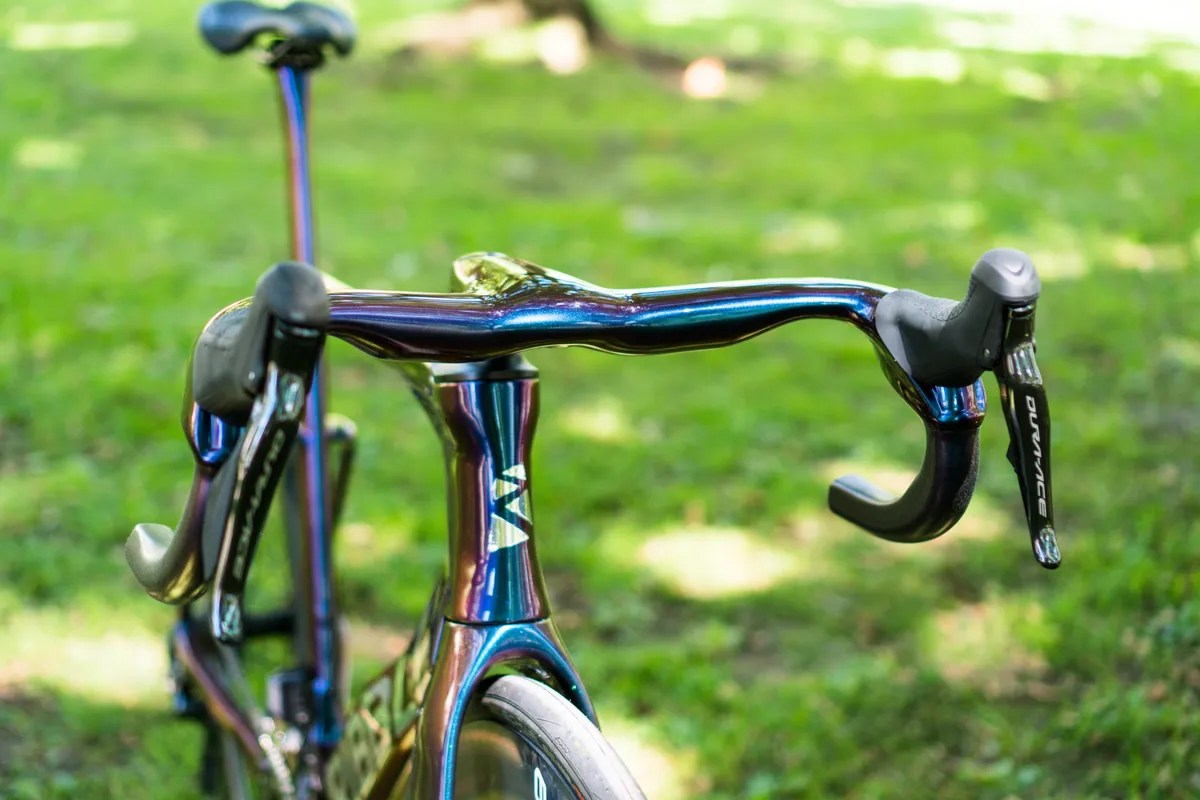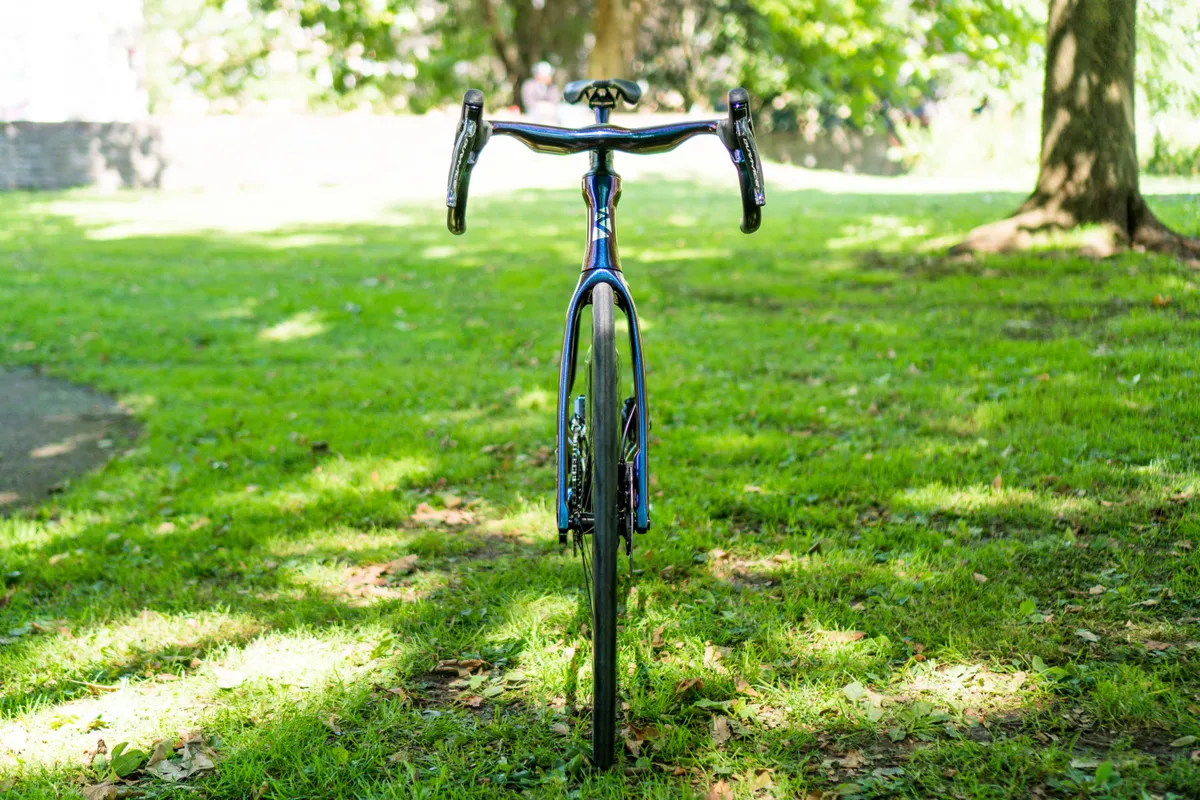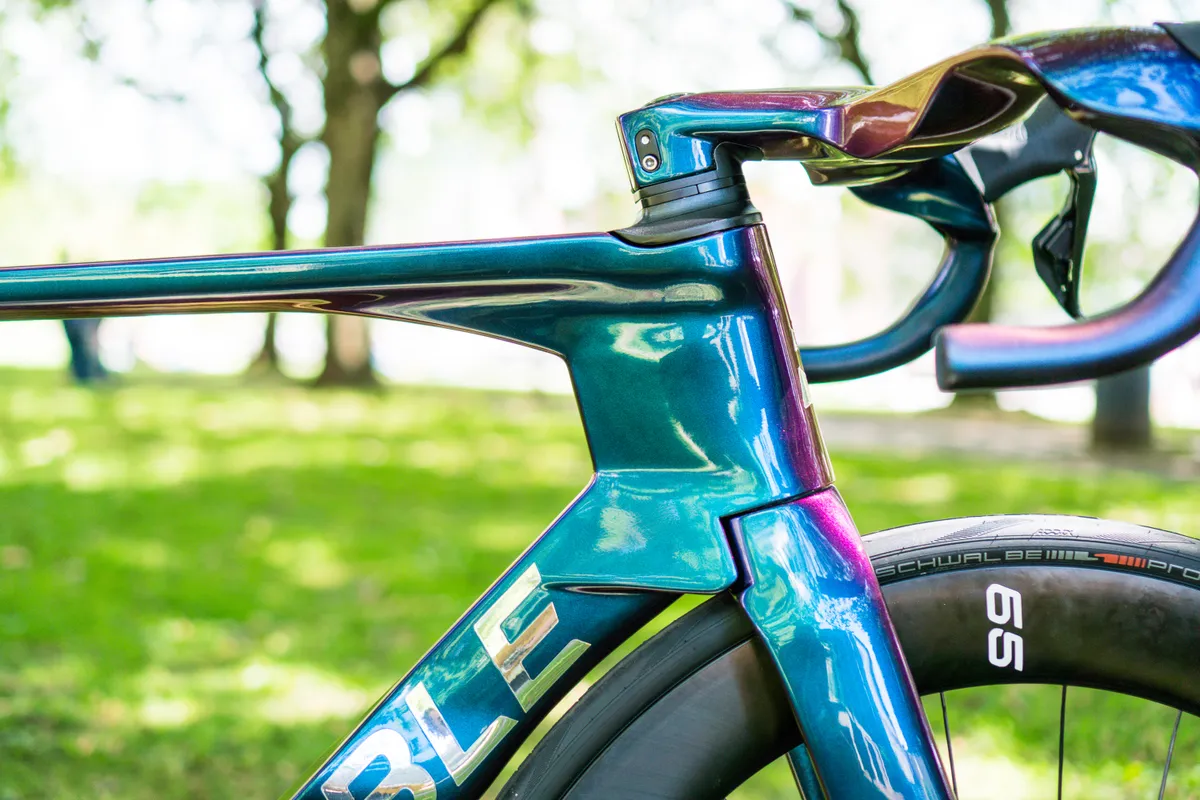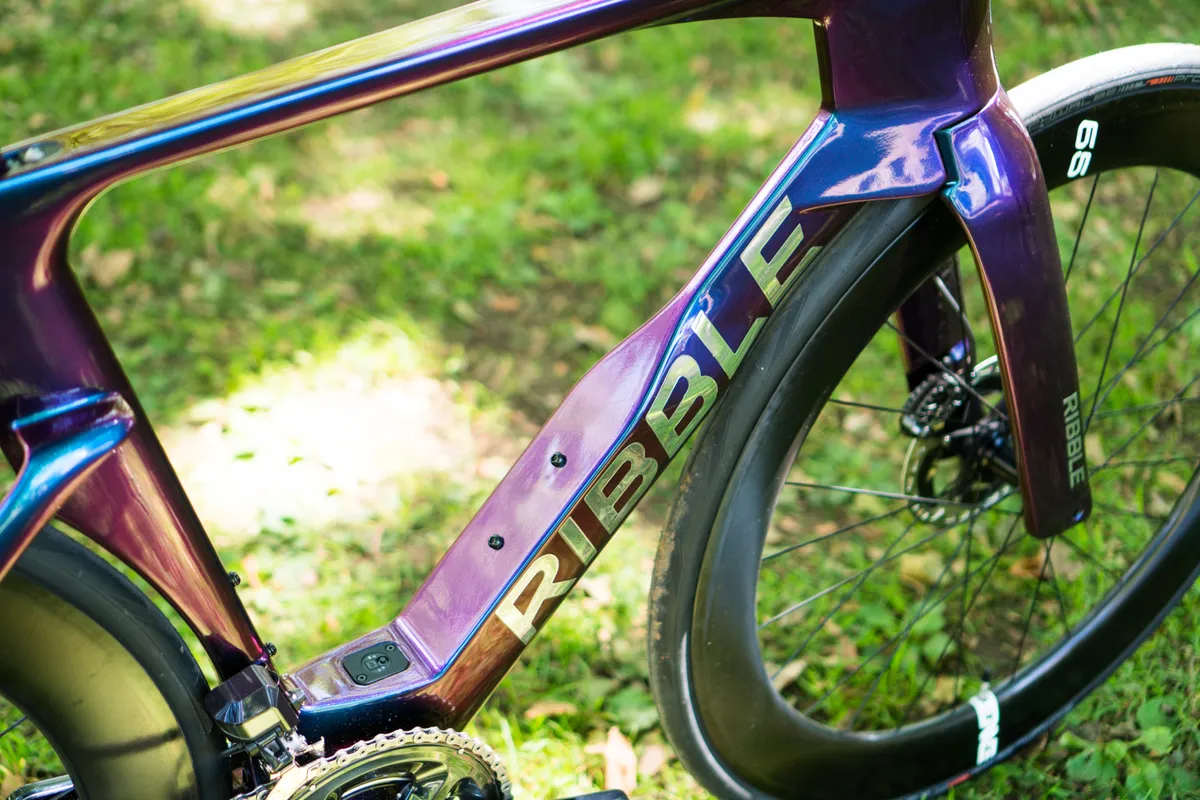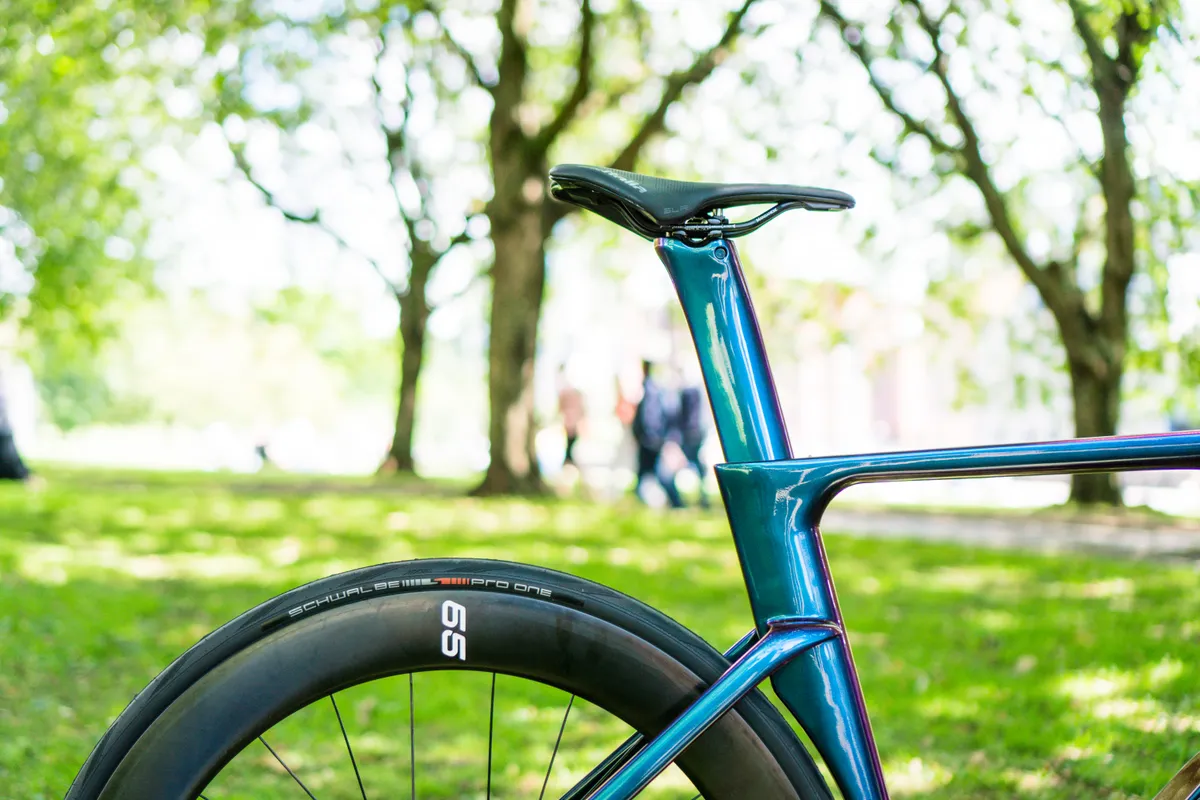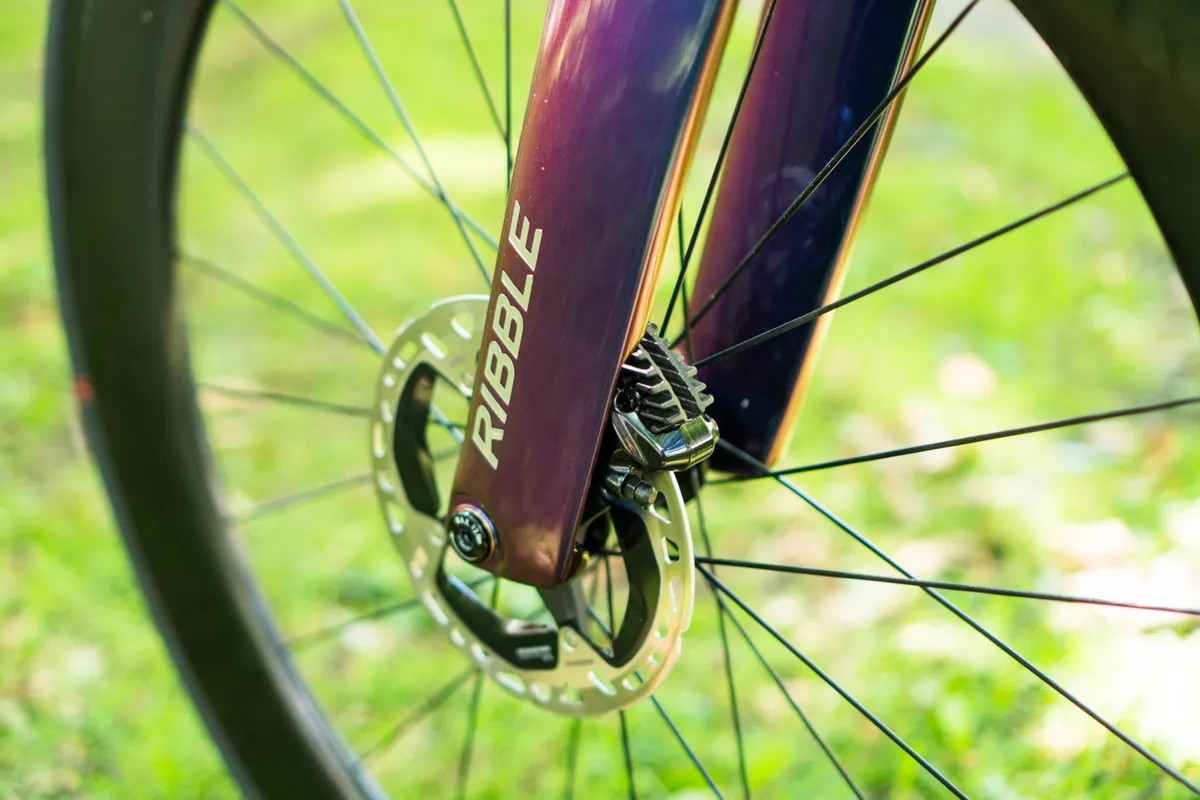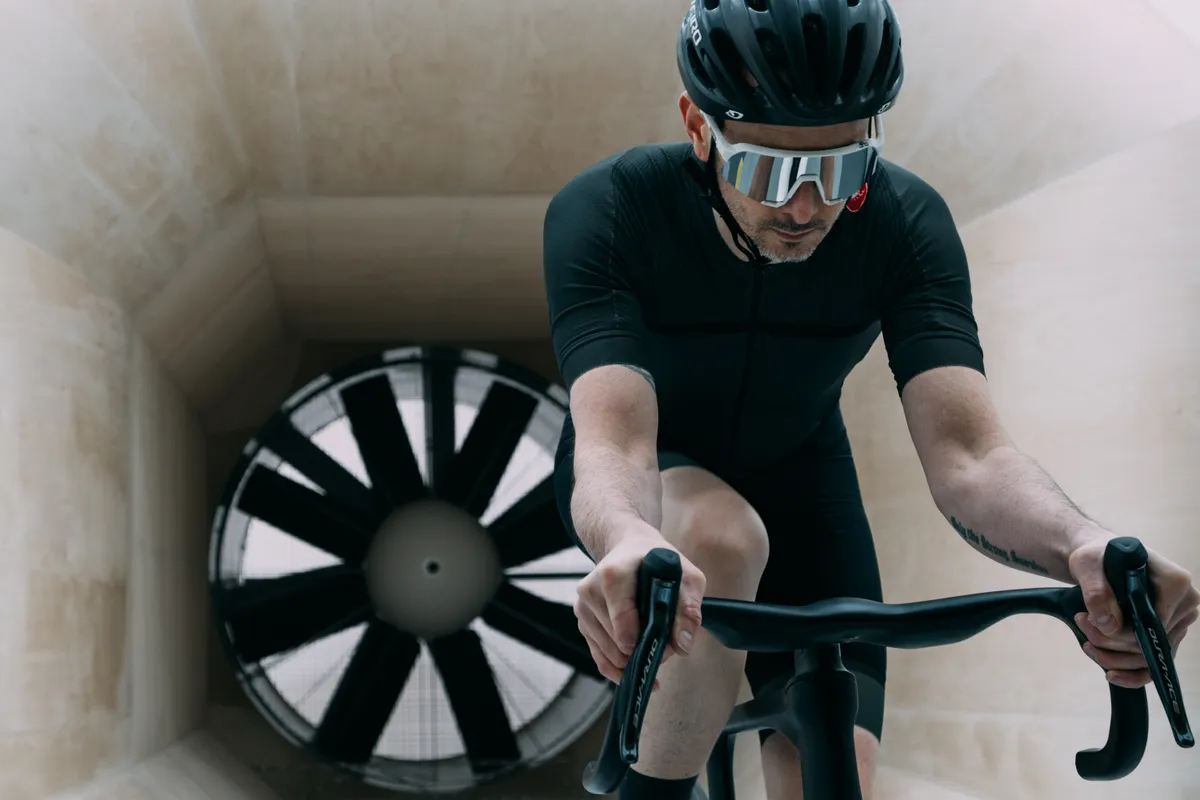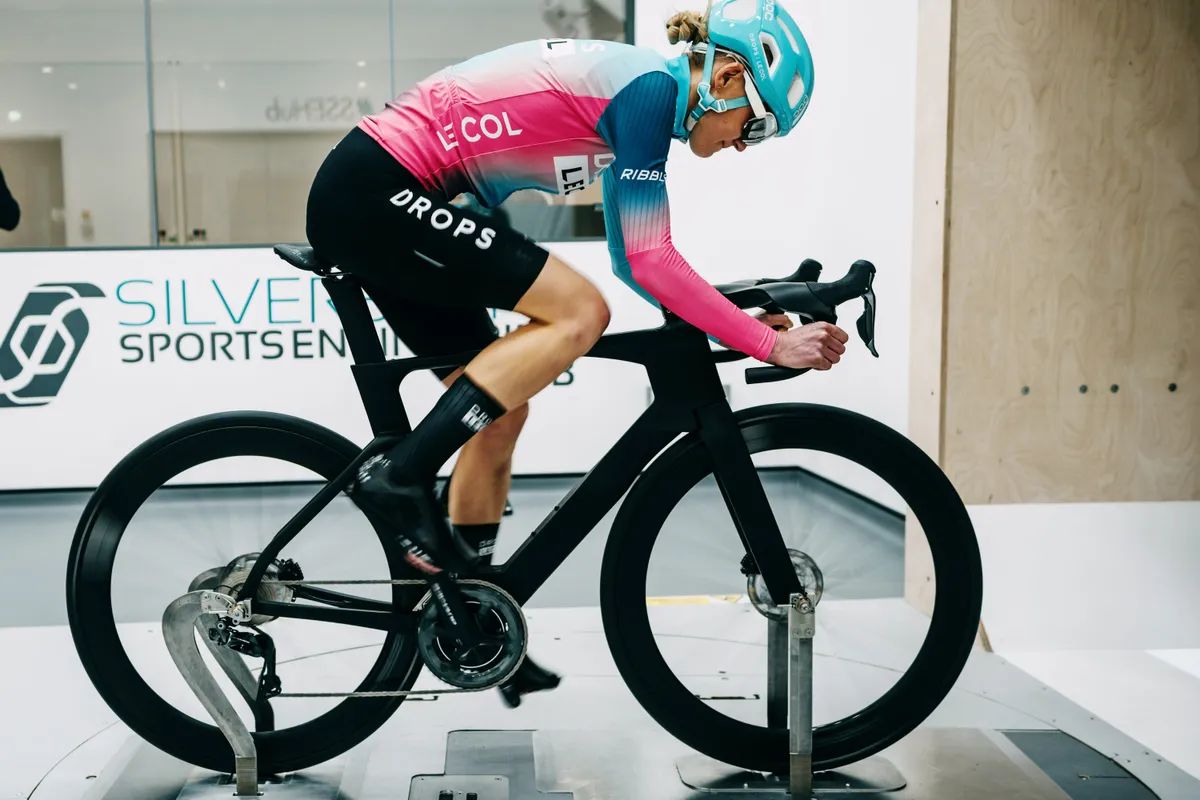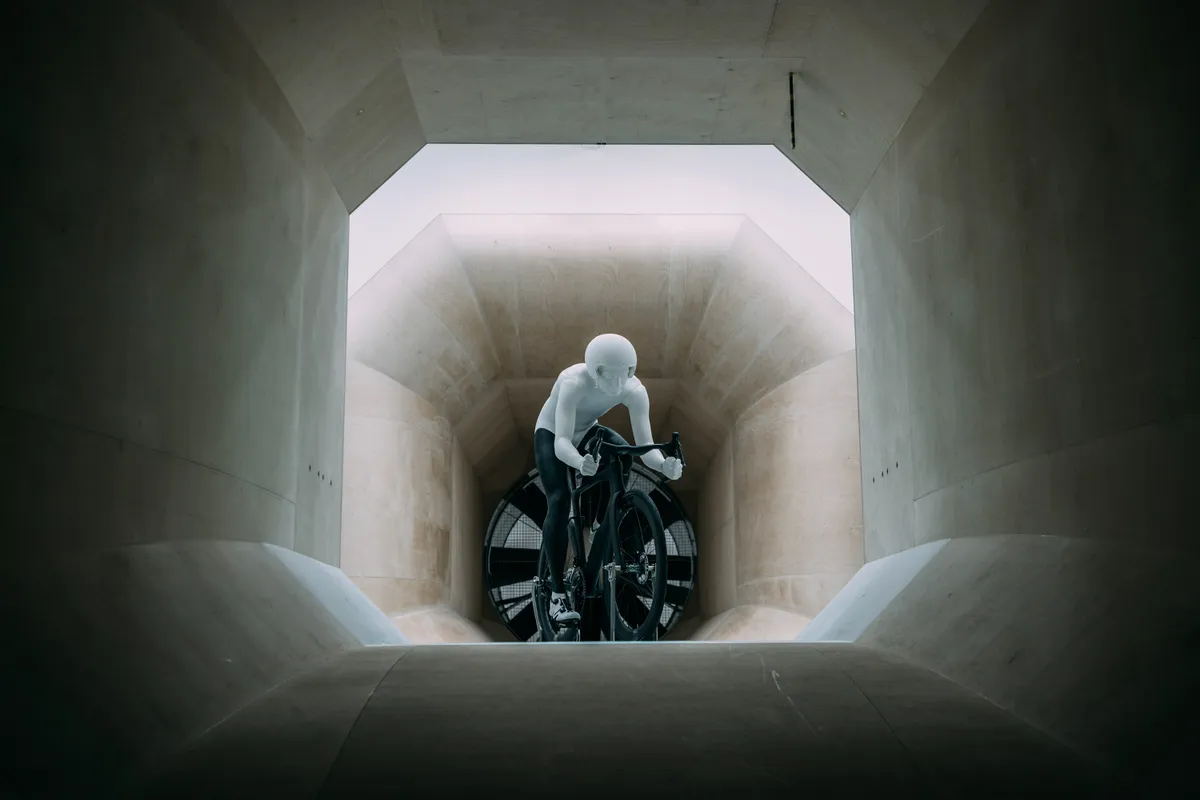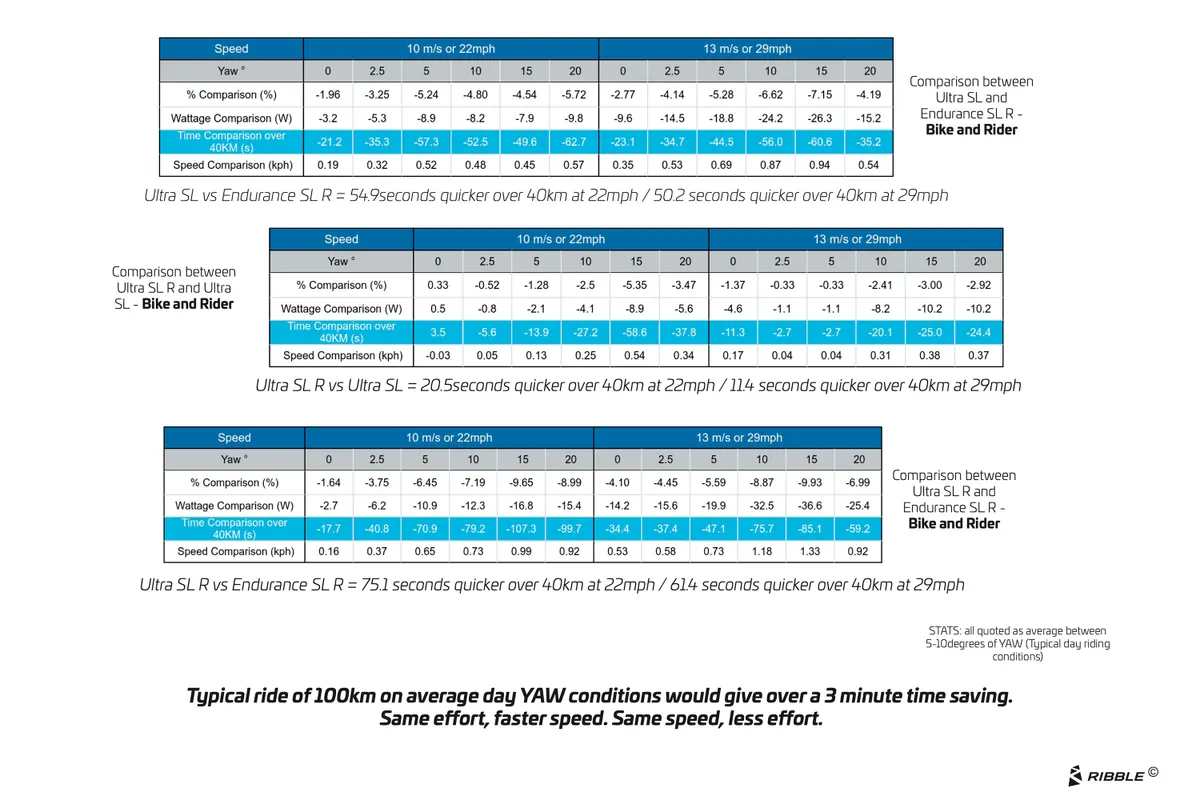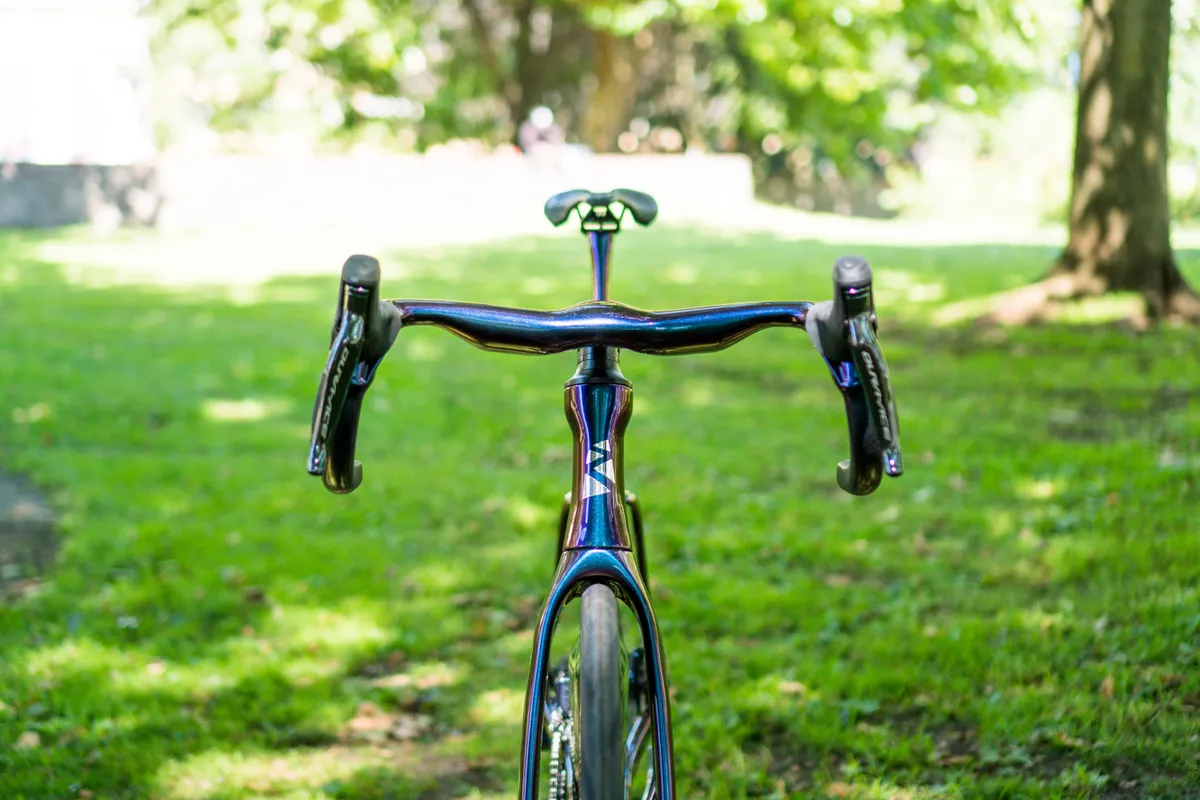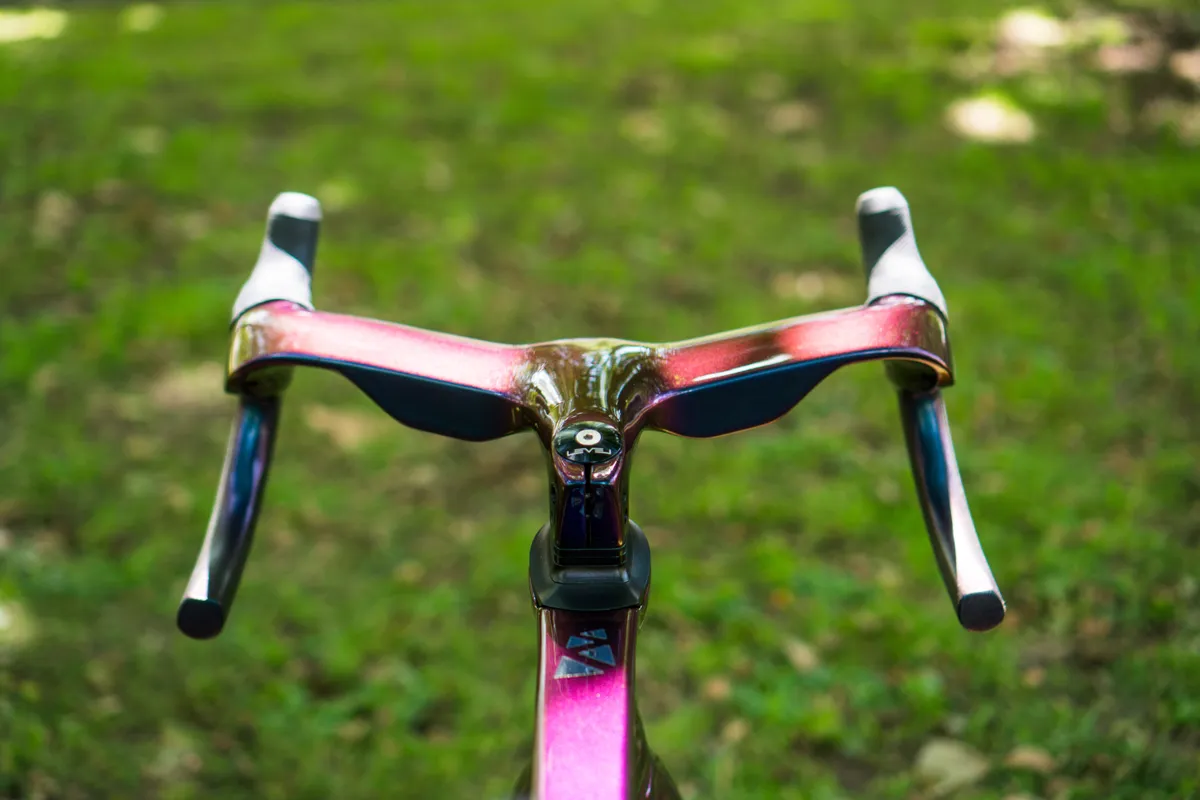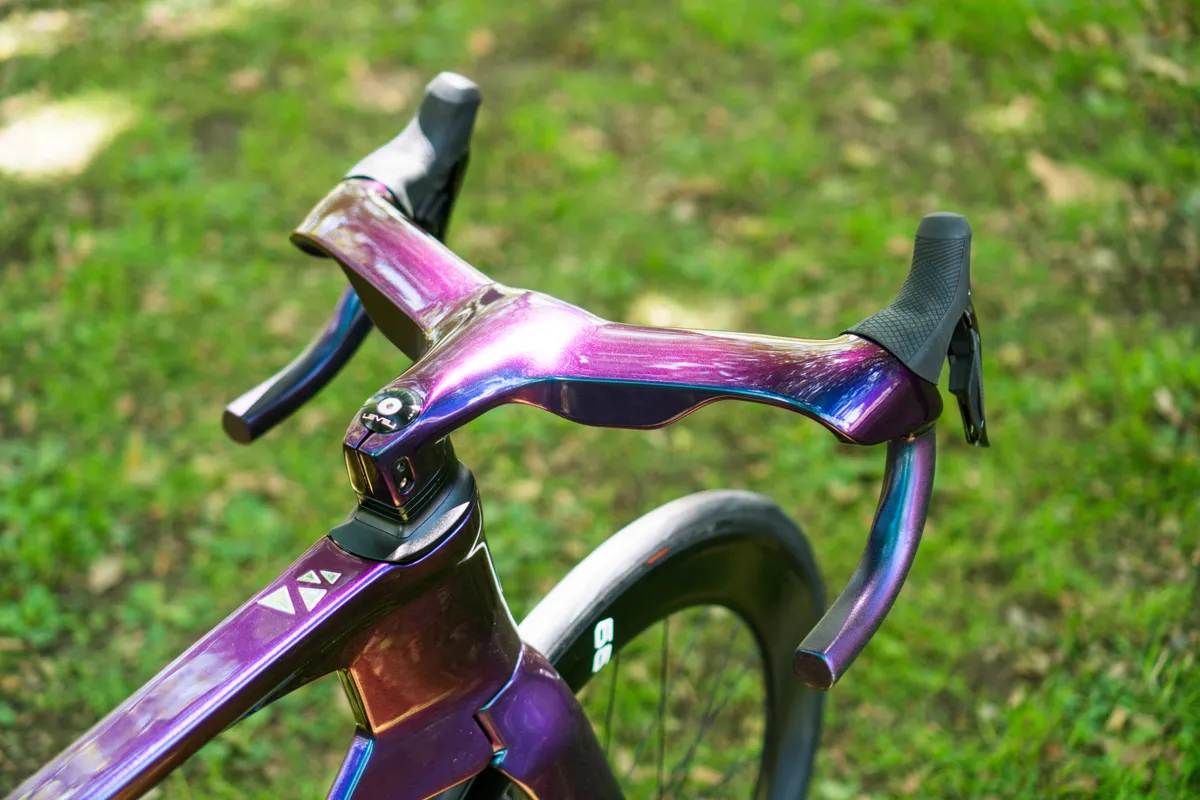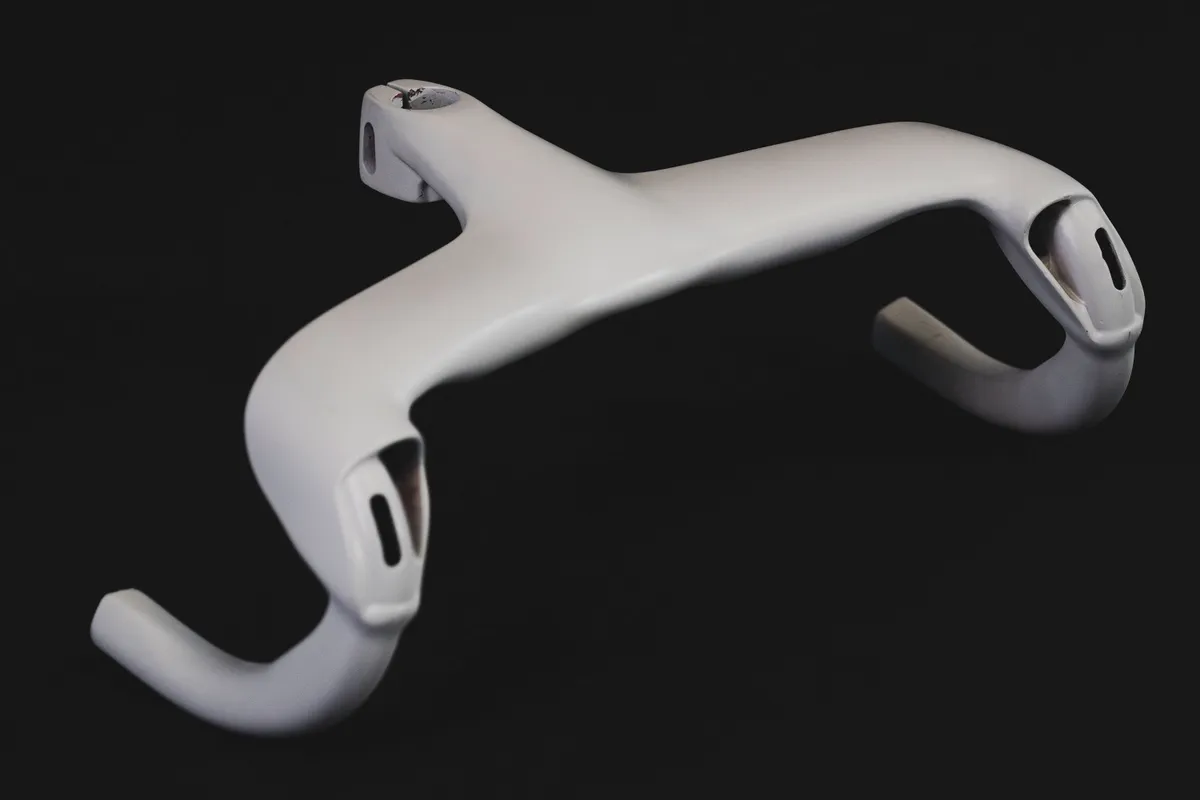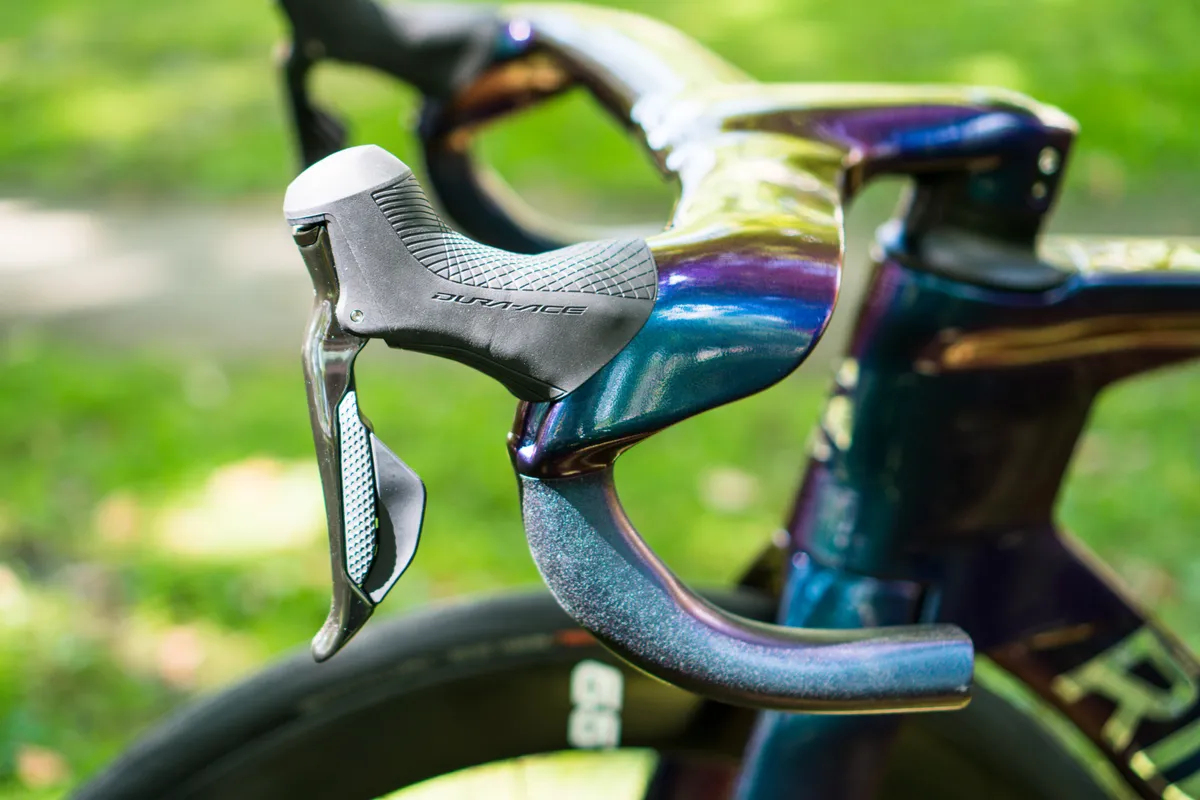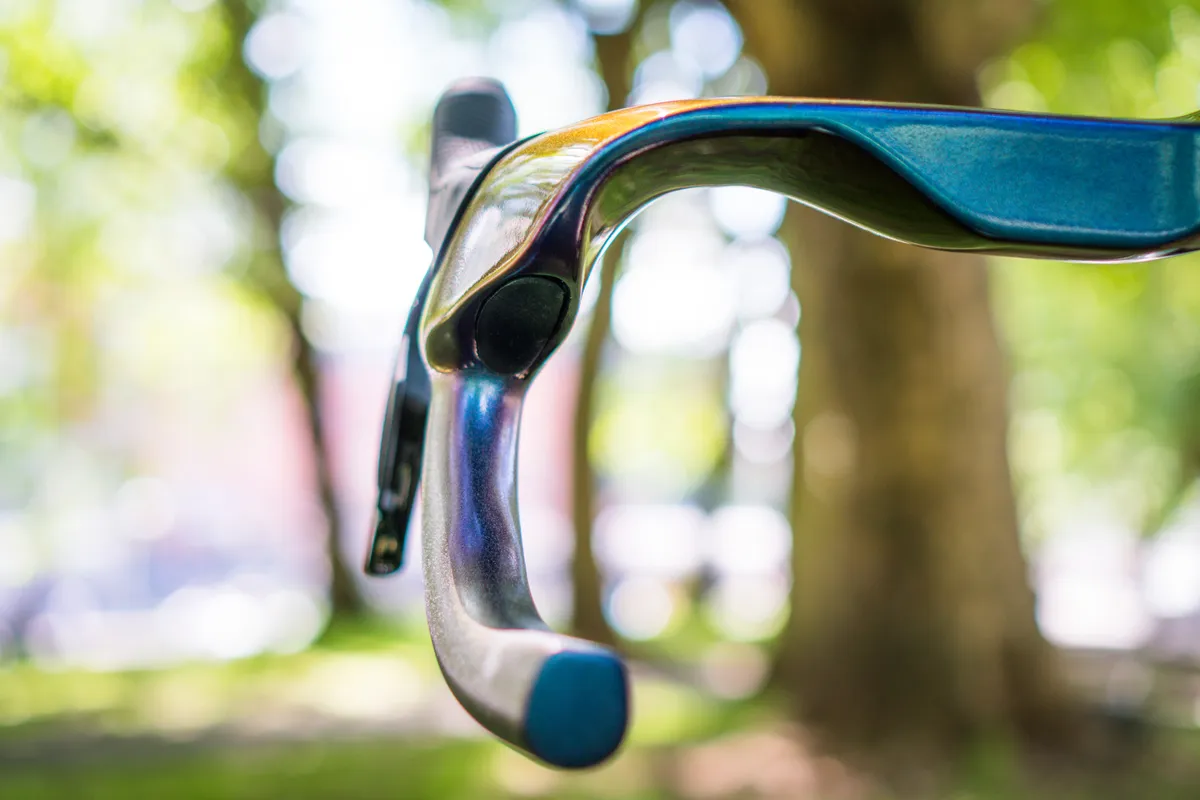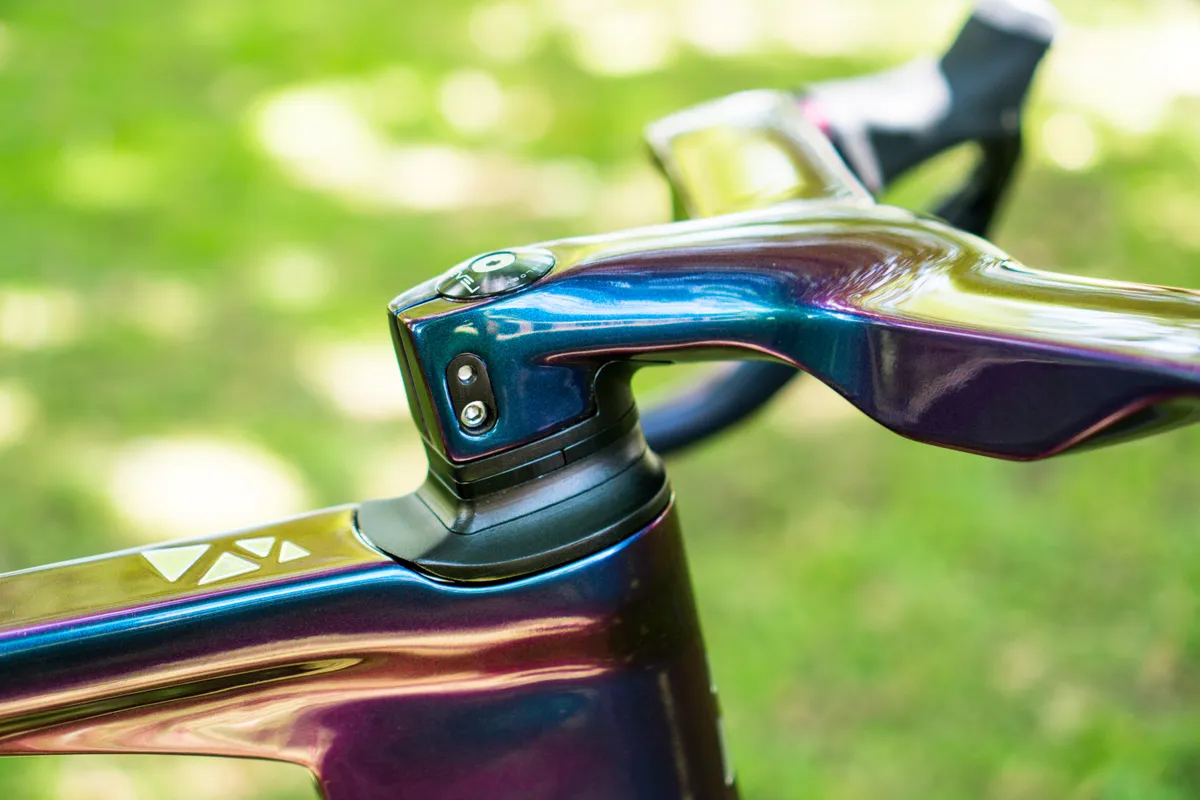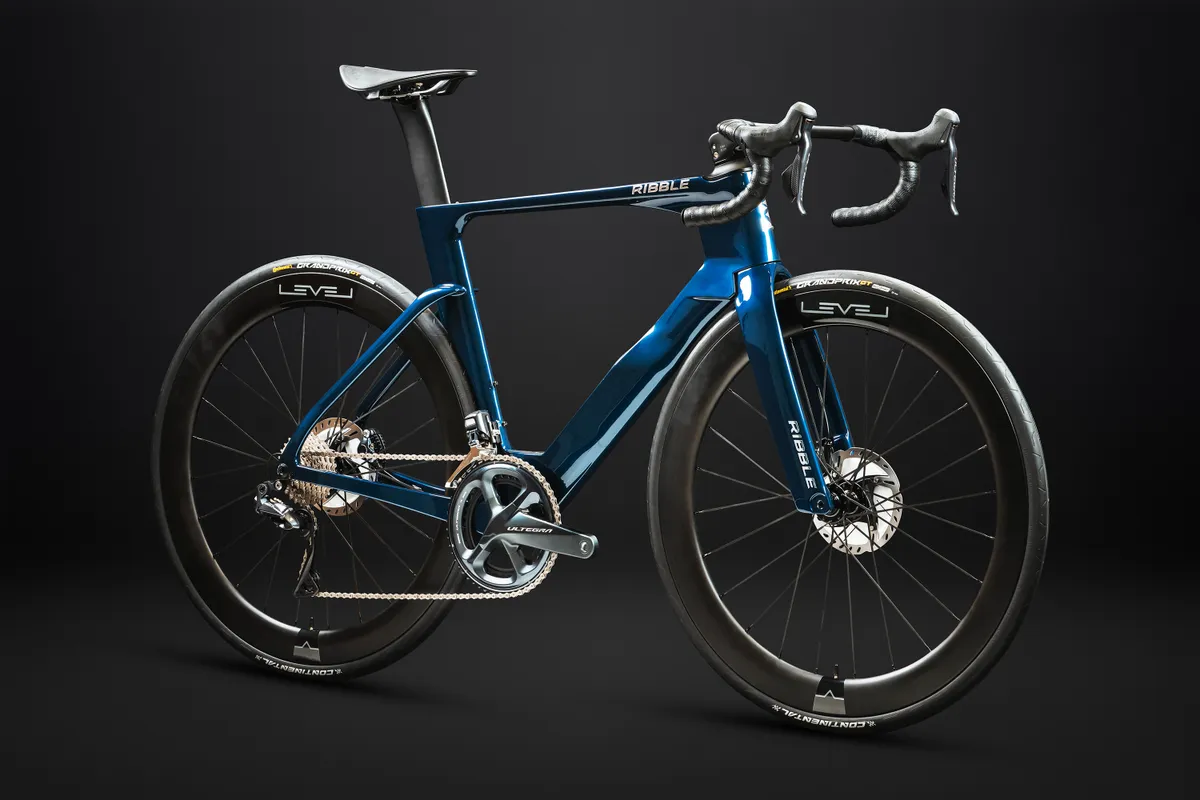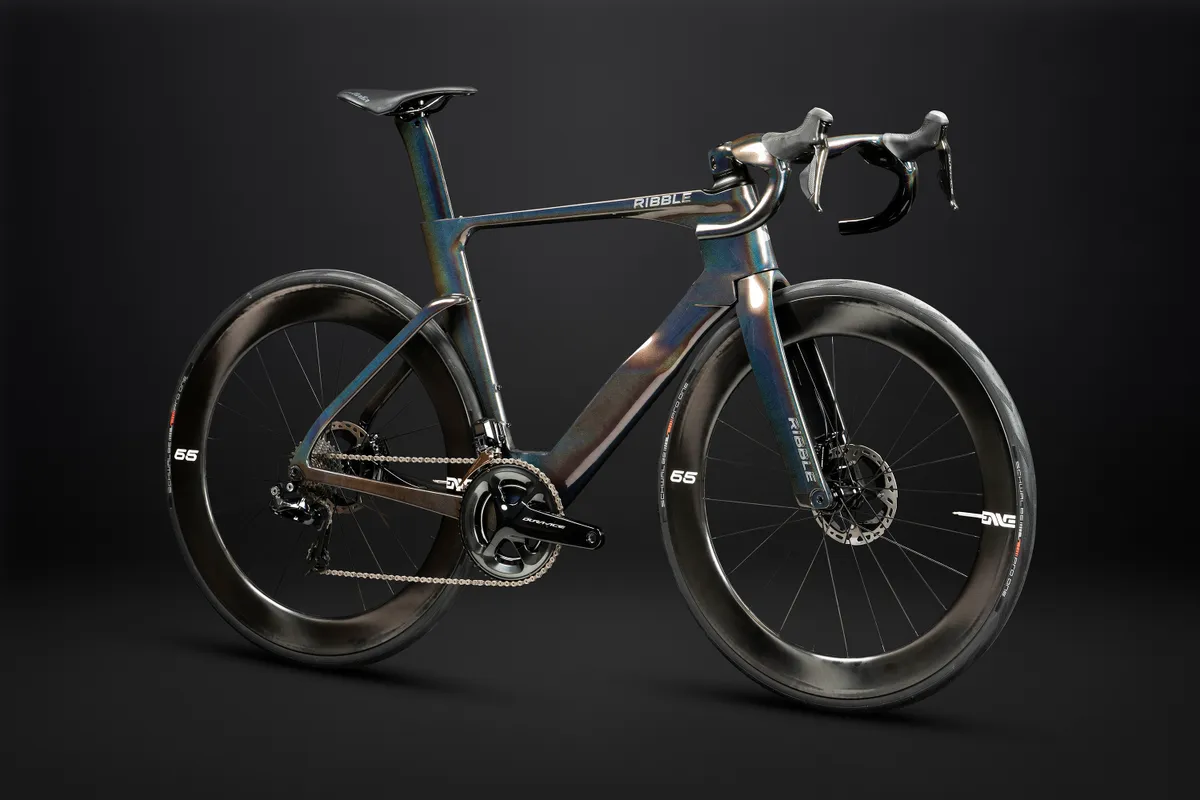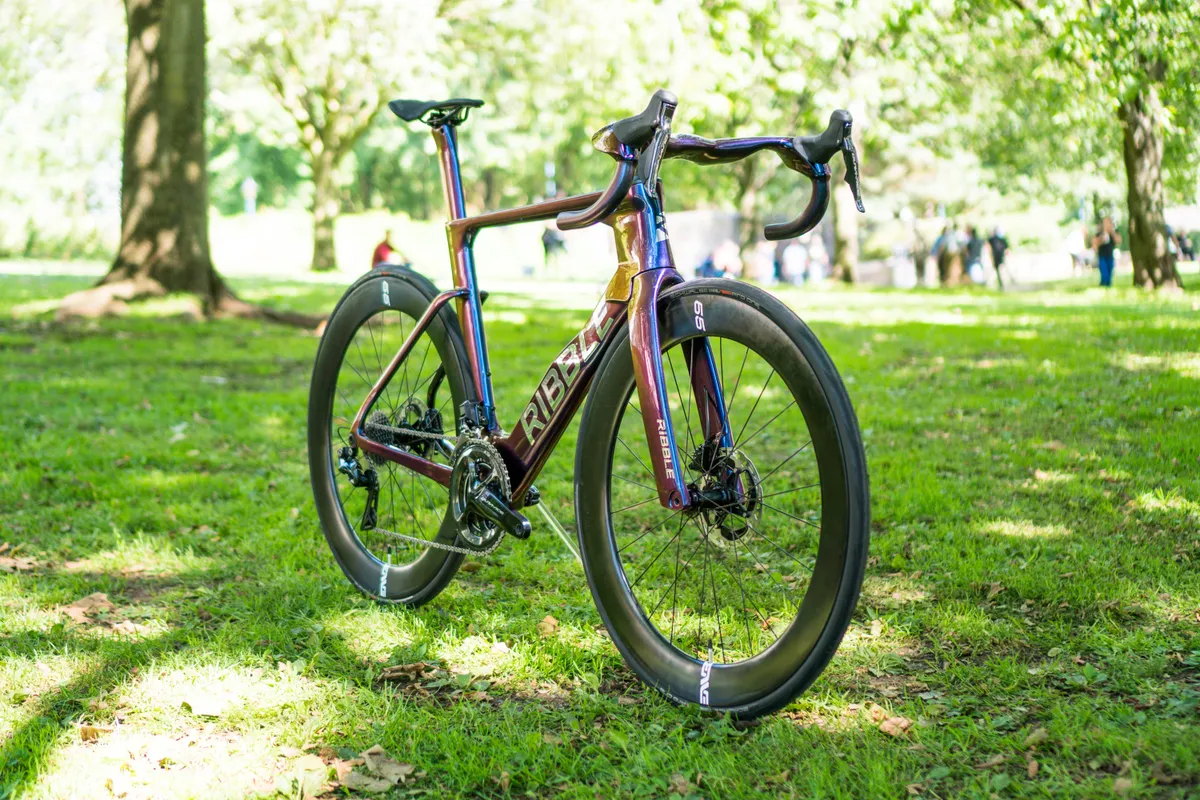Ribble has announced the Ultra, a new aero road bike with an aggressively aero-optimised frameset and a novel integrated handlebar design with “wake generating” bulges on the tops.
These bulges – which are claimed to manipulate the airflow over the rider in order to reduce aerodynamic drag compared to a standard aero handlebar – are unlike anything we’ve seen before, and Ribble claims the gains are significant.
With a brief to “make the most aerodynamically advanced frameset in the world”, Ribble has invested three years of intensive CFD (Computational Fluid Dynamics), wind tunnel and real-world development. The result is the Ultra, which has deep, truncated aerofoil tubes throughout, high levels of integration, and is specced with aerodynamic wheels and components on all builds.
As for how fast it is, Ribble claims the Ultra offers an “11.6 watt saving at 22mph across the average of 5 and 10 degrees of yaw” over Ribble’s Endurance SL Disc road bike, which, Ribble says, makes it “75.1 seconds quicker over 40km”.
To ensure it’s as good for amateurs as it is for the pros, Ribble says the Ultra has been aero tested at two speeds – 22mph (10 metres per second) and 29mph (13 metres per second) – with time gains being more significant at the slower speed.
As always with Ribble, prices are very competitive, starting at £3,199 for a build equipped with Shimano 105 R7020 and Level carbon wheels.
Return of the aero bike
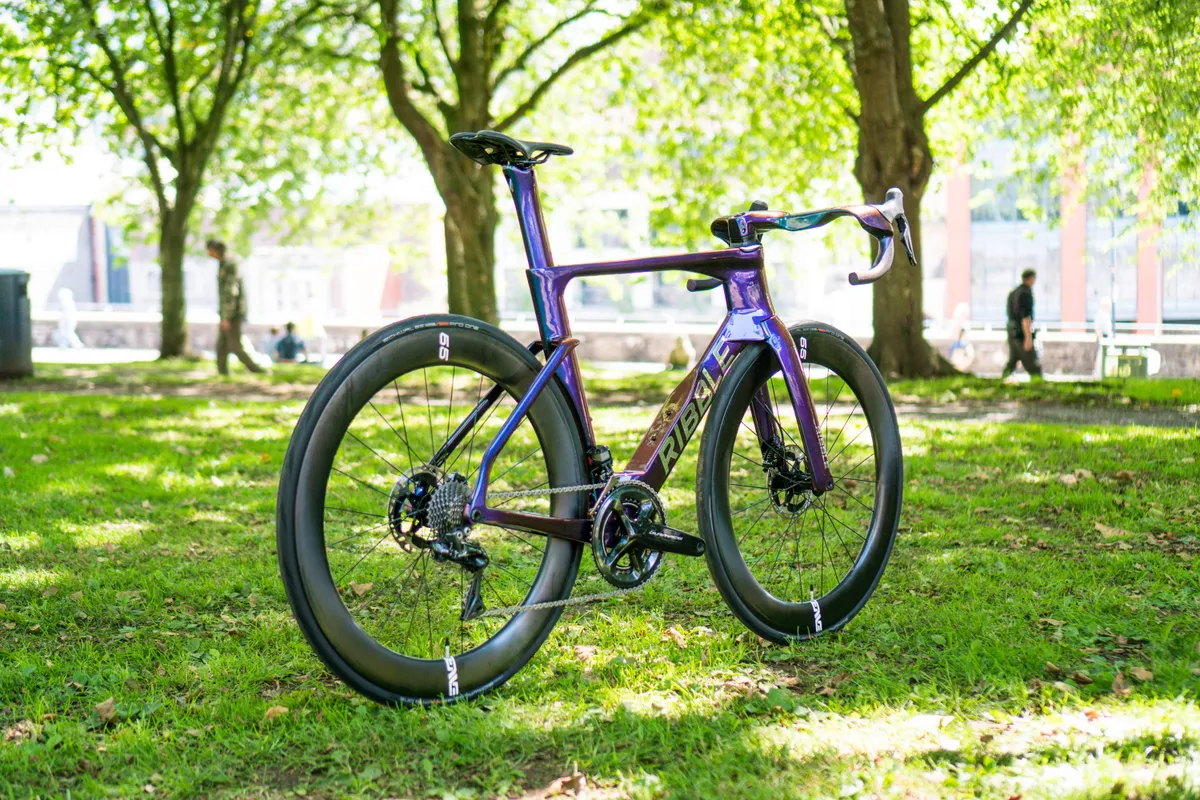
As you’d expect, the extensively aero-optimised frame and fork feature all the hallmarks of modern aero road bike design.
The frame has deep, truncated aerofoil tubes, a narrow head tube and, of course, dropped seatstays.
The lower section of the down tube also flares out dramatically to manage the airflow around a water bottle – the assumption being the vast majority of riders will typically carry at least one water bottle when riding.
The down tube is similar in approach to that of Cannondale’s SystemSix aero bike, although the taper of the aerofoil near the head tube is more dramatic on the Ribble.
The fork was subject to extensive development too, with multiple different aerofoil profiles, tube depths and stance widths tested.
Although UCI rules allow for fork blades up to 80mm deep, Ribble settled on 68mm×15mm fork blades (having also tested 56mm blades). Though Ribble’s testing showed the 80mm fork blades were more aero below 10 degrees of yaw, performance dropped off dramatically at wider yaw angles.
Ribble says it tested both narrow and wide fork designs, but found aligning the fork blades with the front wheel axle width was the optimum solution. So much so, in fact, that Ribble claims the fork profile begins to generate lift / negative drag (or the sailing effect, as it’s also known) beyond 5 degrees of yaw.
The non-driveside fork leg is also shaped to hide the front brake caliper from the airflow, improving the airflow over a component that isn’t typically optimised for aerodynamic efficiency.
The seatstays were also placed in line with the fork blades, to further reduce their drag at low yaw angles.
To recap, yaw is “the angle of attack of the wind on a cyclist”. A straight-on headwind is a yaw angle of 0 degrees, and crosswinds have positive or negative values depending on which side the wind is coming from. The faster you ride, the lower yaw angles you’ll typically experience, and vice versa.
Interestingly, Ribble says the wide, “outboard design” – where the fork blades stand significantly wide of the wheel and create a wake in the airflow for the rider’s legs to sit in (as seen on the Hope HB.T track bike) – provide a detectable aero benefit below 5 degrees of yaw (typical of the high-speed, low wind conditions on a track), but increase drag at the higher yaw angles Ribble says are more often experienced by road cyclists.
Following wider industry trends, Ribble says the Ultra frameset is aerodynamically optimised around 28mm road bike tyres, but has clearance for tyres up to 32mm, if you need more comfort.
Home-mechanics will likely be thrilled to learn the Ultra comes with a threaded bottom bracket.
The patent-pending Ultra Bar
Aside from the aero-optimised frameset, one of the key drag-reducing components on the bike is Ribble’s new patent-pending road bike handlebar, the Ultra Bar.
The Ultra Bar hides all of the cables from the wind, but that’s just the start of the aero goodness.
As handlebars sit in front of the rider, they’re one of the first things on the bike to hit the airflow. Realising this means a bike’s handlebar subsequently influences the airflow over the rider’s body behind it, Ribble designed the Ultra Bar to manipulate the airflow over the rider rather than simply slice through the air as cleanly as possible.
This airflow manipulation is achieved via what Ribble calls “wake generators”. In a nutshell, the top of the handlebar bulges dramatically in the central portion closest to the stem, meaning they have a larger impact on the airflow behind them compared to traditional aero road handlebars (which tend to have tops that are slim and flat).
This apparently means, in a straight wind tunnel shootout with no rider involved, the Ultra Bar actually creates more aerodynamic drag than a more traditionally shaped aero handlebar.
Crucially, though, the situation is said to flip once a rider is involved, leading to an overall drag reduction for the rider plus bike system.
With a rider in place, Ribble claims the Ultra SL R equipped with the Ultra Bar is “20.5 seconds quicker over 40km at 22mph” than the same bike equipped with Ribble’s current Level 5 integrated handlebar.
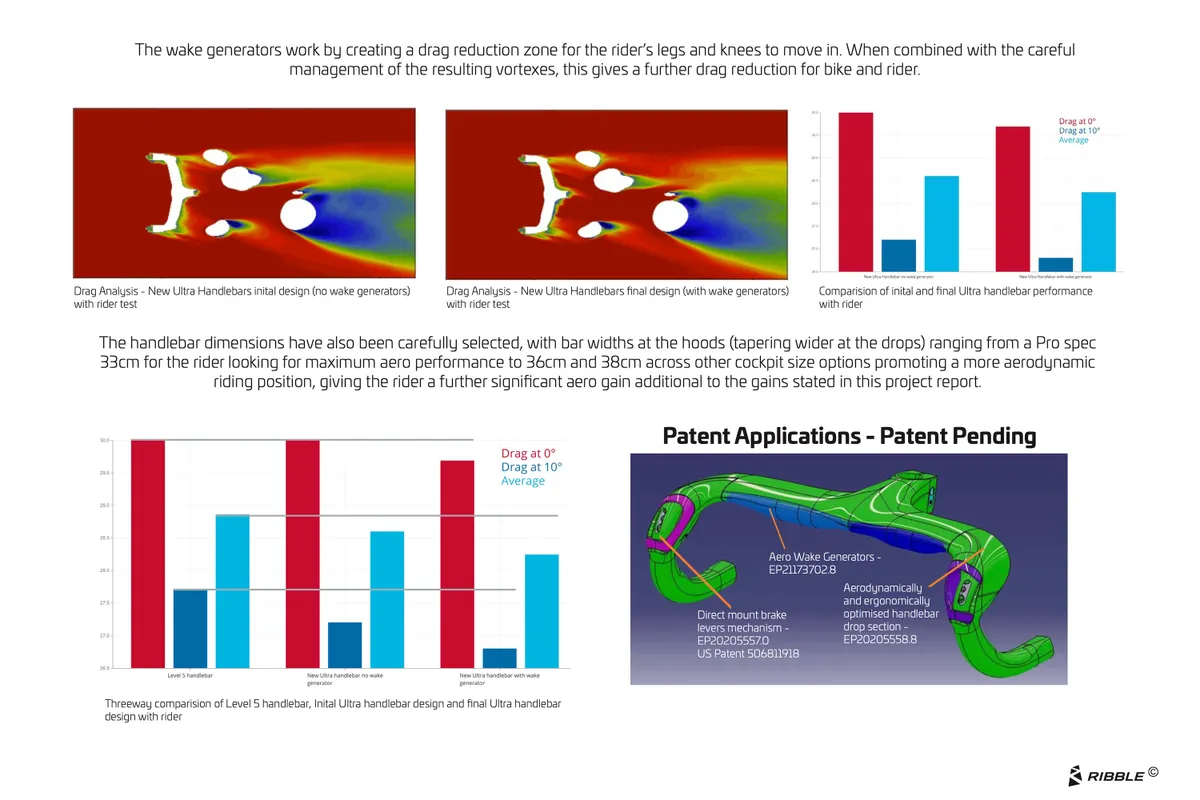
In addition to this, the Ultra Bar is only available in widths of 33cm, 36cm or 38cm (centre to centre at the brake hoods – the drops flare out by 2cm on either side).
That’s narrow compared to what we’re used to seeing specced on off-the-shelf bikes. A 56cm/medium frame, for example, normally comes with a 42cm handlebar.
The idea is to promote an aerodynamic riding position (switching from a 42cm handlebar to a 36cm one could save up to 12 watts at 45kph), though riders who prefer something wider could theoretically swap it out for the Level 5 integrated handlebar because the Ultra frameset is also compatible with that handlebar.
The narrowest, 33cm width was specifically designed for Ribble’s sponsored professional teams, Ribble Weldtite Pro Cycling and Drops–Le Col, and is paired with a 140mm stem length for the kind of long and narrow riding position increasingly favoured by riders at the top of the sport.
The innovations don’t end there, though. In order to move away from the shaping restrictions of round, 23.5mm brake lever clamps, Ribble has designed a new direct-mount solution (also patent-pending) for attaching the brake levers to the Ultra Bar.
This design does away with the traditional metal clamping band found on brake levers and instead sees the brake levers bolt directly onto the handlebar.
This means the clamping area of the Ultra Bar can be made more aerodynamic than on a standard handlebar, which needs to be 22.2mm and round to accommodate a standard 23.5mm brake lever clamp.
The system is said to work with any standard brake lever, and the reshaped, non-round drops are claimed to be both more aerodynamic and more ergonomic.
Ribble has also covered the drops with a kind of grippy paint, which is said to negate the need for handlebar tape, for another small aero gain (adding handlebar tape adds a small but measurable amount of aero drag by increasing frontal area).
Builds, pricing, weight and availability
Just like Ribble’s current Endurance road bike platform, the Ultra will be available in two options.
First, there’s the top-tier Ultra SL R, then there’s the cheaper Ultra SL. Both versions are disc brake only, sorry #savetherimbrake fans.
Ribble is coy about the exact differences between the two versions (both are said to be built with Toray T1000/T800 carbon fibre), but the frameset moulds for each bike are the same.
Ribble has confirmed there’s a 150g weight difference between each version, though. A painted, size medium Ultra SL frame is claimed to weigh 1,200g, while an equivalent Ultra SL R comes in at 1,050g.
This results in Ultra SL R builds starting from 7.6kg at the top end of the pricing scale, which is competitive with the current crop of aero road bikes.
One obvious difference is that while all SL R builds get the innovative Ultra Bar described above, the SL builds are specced with Ribble’s Level 5 integrated aero handlebar.
Prices start at an attractive £3,199 for an Ultra SL build with Shimano 105 R7020 and Level carbon wheels.
If you want the Ultra Bar, prices for the Ultra SL R start at £3,899 for a build with Shimano Ultegra R8020 and Mavic Ksyrium 30 wheels, and rise to £7,299 for a build with Shimano Dura-Ace R9170 Di2 and Enve Foundation 65 carbon wheels.
There’s also a triathlon-specific Ultra SL R build that costs £6,599 and comes with a tri-specific seatpost and components, Shimano Ultegra R8070 Di2 and Ribble’s wonderfully bonkers tri-spoke carbon wheels.
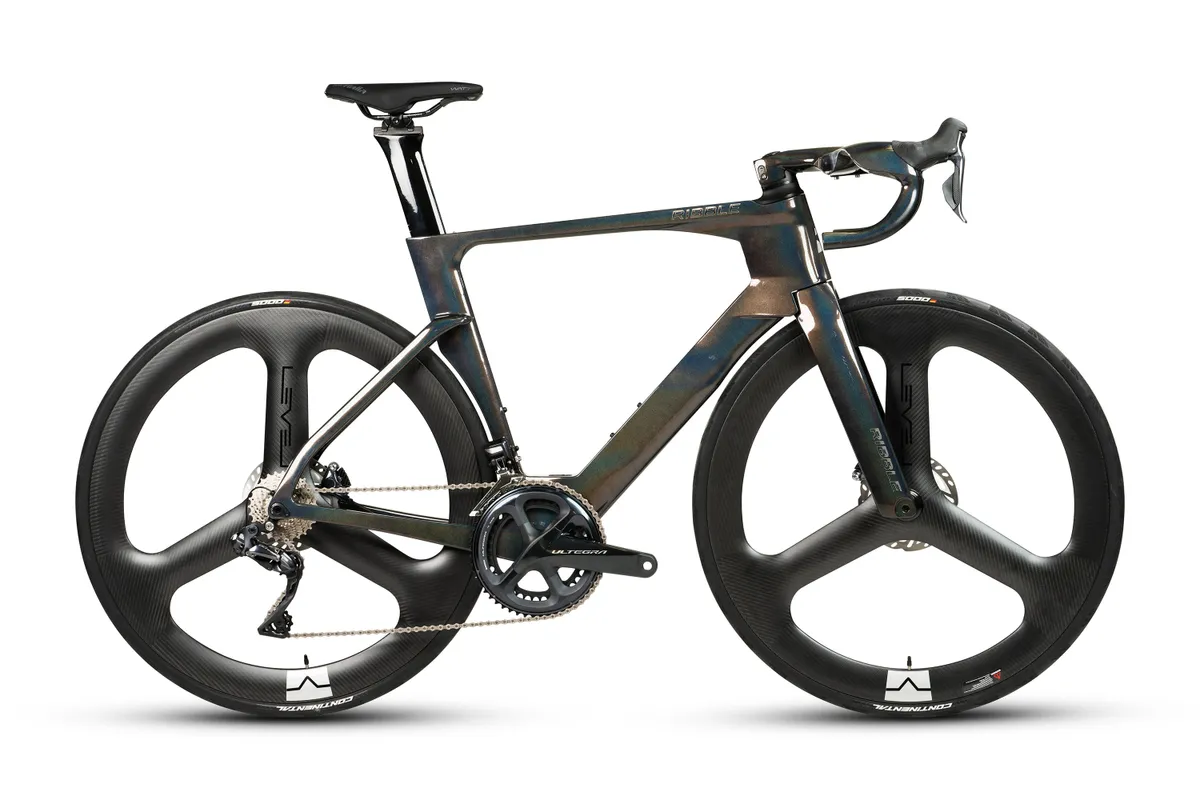
Full build details can be found on Ribble’s website, and exact specifications can be further customised through Ribble’s online Bike Builder tool. Riders can also opt for a custom paint job via Ribble’s Custom Colour scheme.
As with any bike launch in these testing times, with stock and component shortages affecting the bike industry from top to bottom, one key question is “when will I actually be able to buy one?”.
Ribble told BikeRadar the Ultra SL and Ultra SL R can be pre-ordered now, with bikes beginning to ship in October 2021… Depending on component availability.
